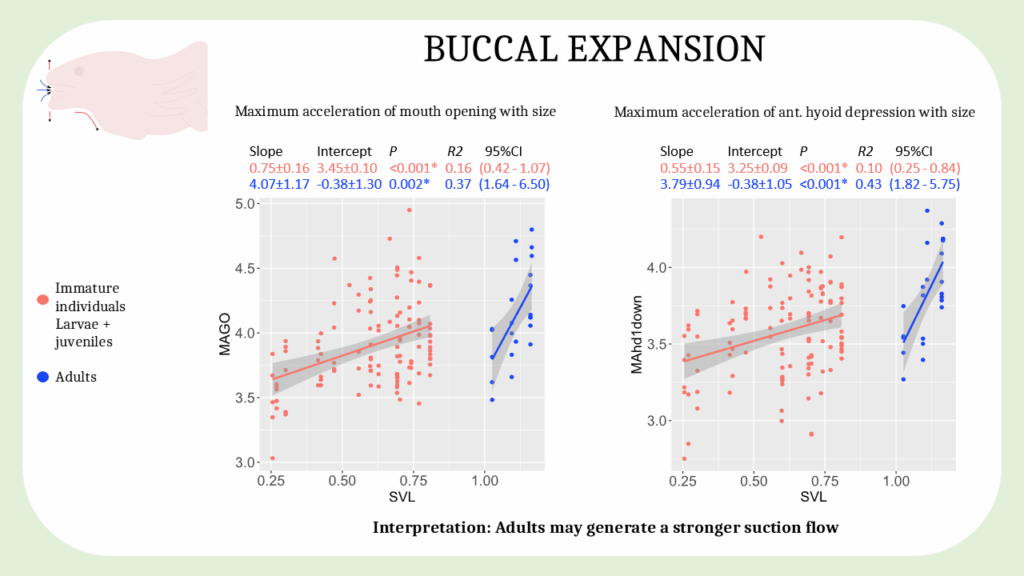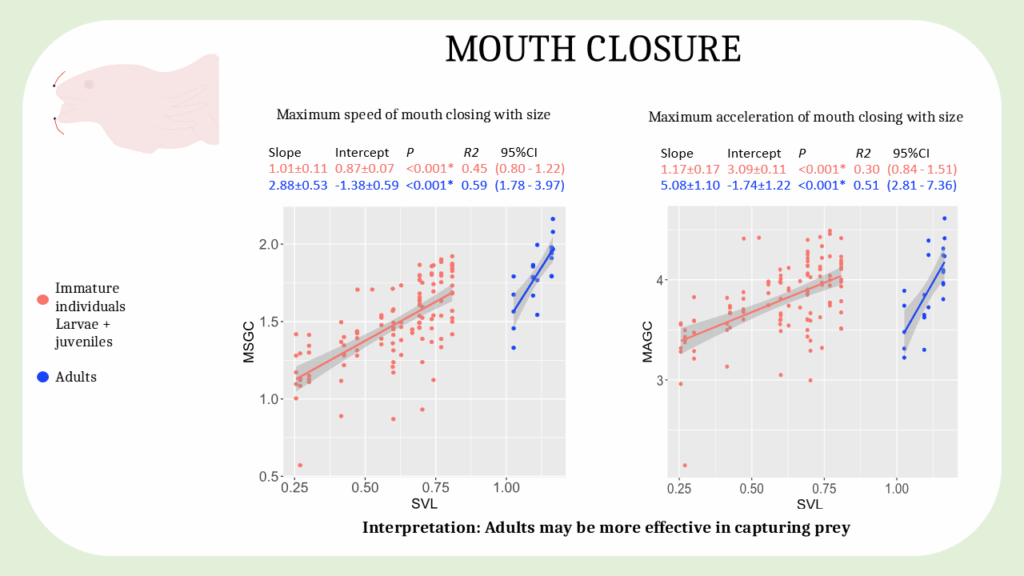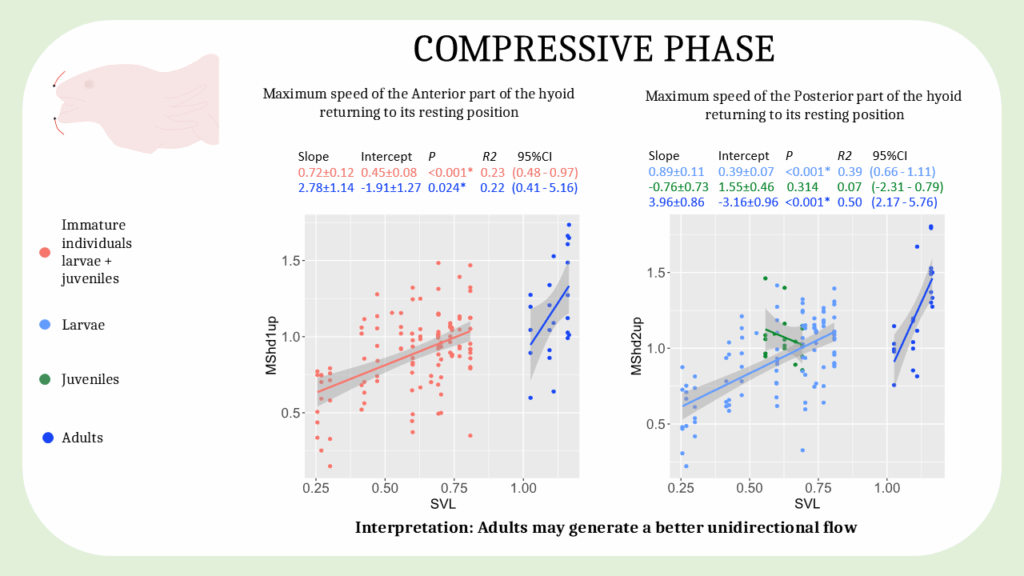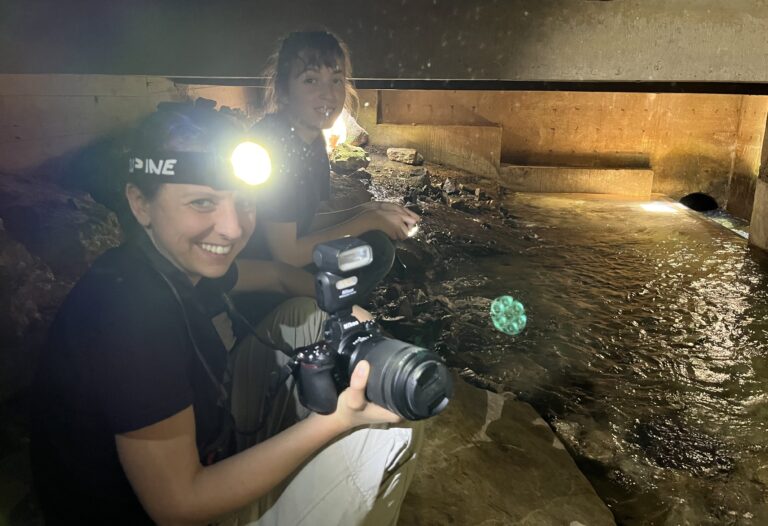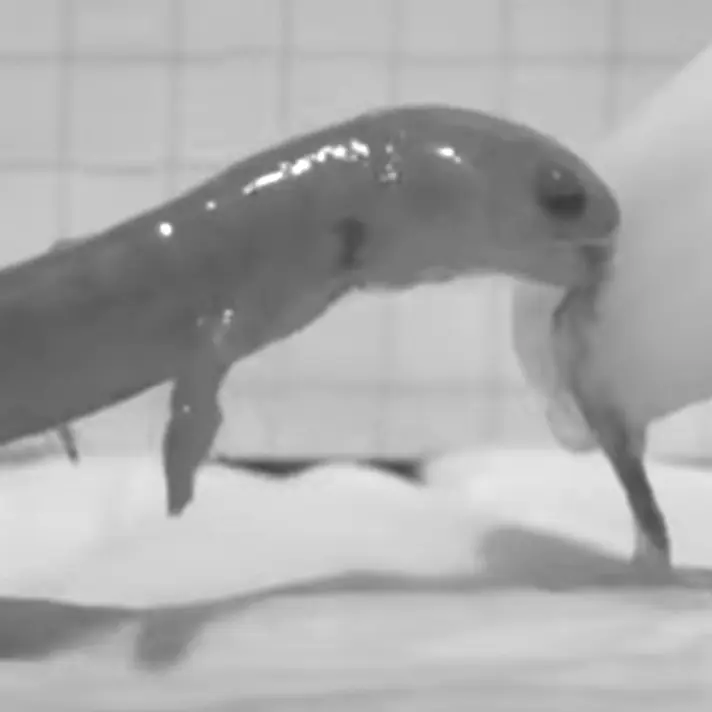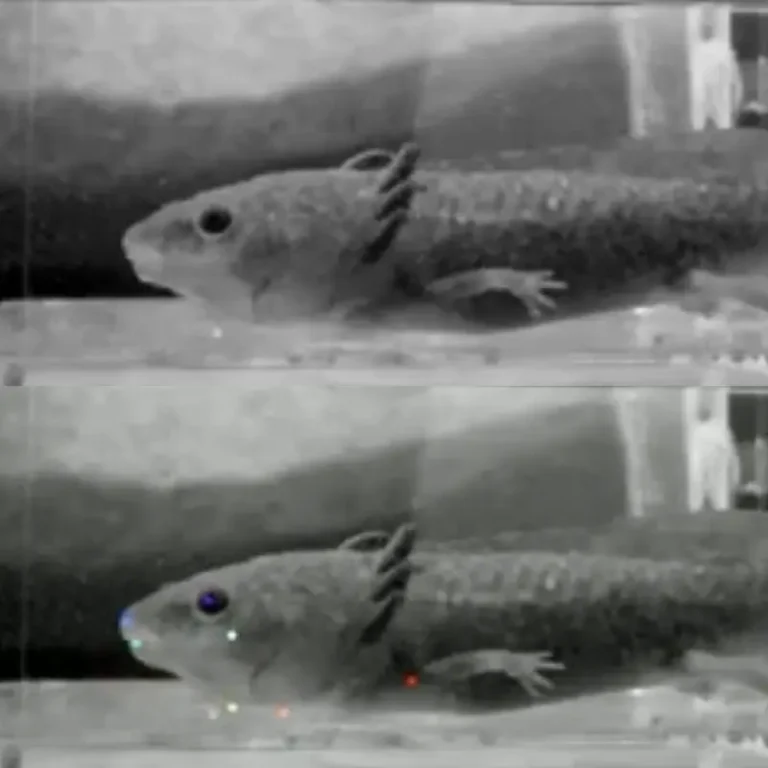This blog post summarizes our recently published paper in Biology Open, in which we explored how size and developmental stage affected the feeding kinematics of larval, juvenile and adult Ambystoma mexicanum (axolotl).
Peadomorphic species: are the adults just big larvae?
The iconic cuteness of axolotls comes from their paedomorphic life cycle. Indeed, in this type of life cycle, even when adult, the individuals retain features usually seen only in larvae such as external gills and labial lobes.
Another consequence of paedomorphy is the fact that larval, juvenile and adult axolotls use the same method to catch their prey: suction feeding. This involves rapidly expanding the mouth cavity, which creates a flow of water that draws the prey into the mouth (see diagram bellow for more details)
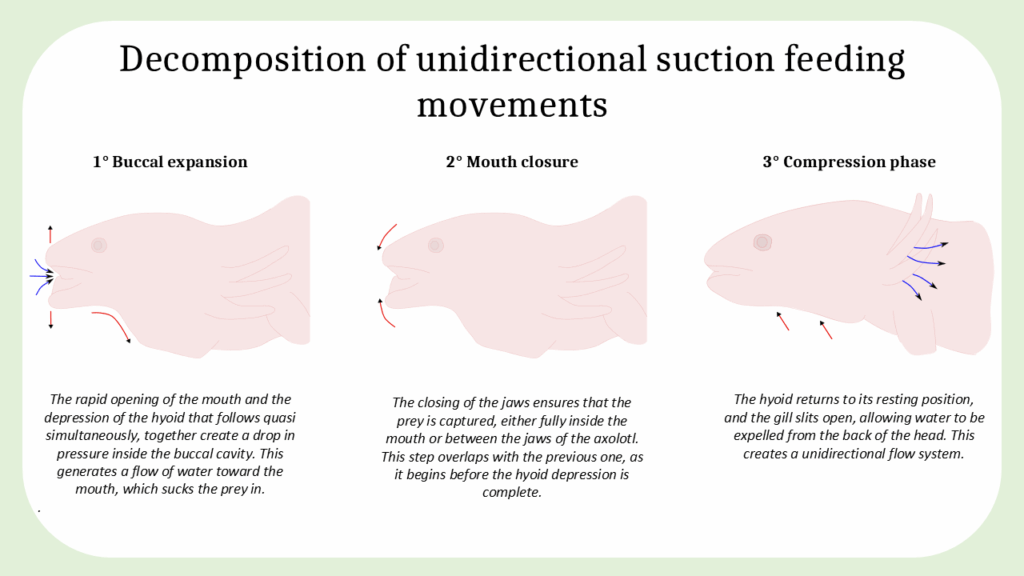
Because adult axolotls look and feed like larvae and juveniles, one can expect that the possible differences in how they capture prey would be only due to their larger size.
What we measured …
To test this, we recorded videos of larvae, juveniles and adults eating their meal (see video below) and measured the feeding movements of the head such as the speeds and accelerations of the jaw and hyoid, or how wide the mouth opens and the hyoid depresses, and associated timings and durations.
… What this revealed
We found that for most of these variables, values increased steadily with size, regardless of whether the individual was a larva, a juvenile, or an adult. However, for some variables related to speed and acceleration, the pattern was different: the increase was steady between larvae and juveniles, but for adults, the values increased more sharply with size. For these variables, size alone did not explain the differences we observed, but something happened at adulthood that modify the feeding movements (see picture gallery below).
These results suggest that adult axolotls are able to catch bigger and more elusive prey than larvae and juveniles. From an ecological perspective, this could mean that even though larvae and adults share the same environment (in the wild, they are endemic to the Xochimilco lakes), they may not compete for food, because they may be targeting different types of prey. Adulthood is not an illusion!
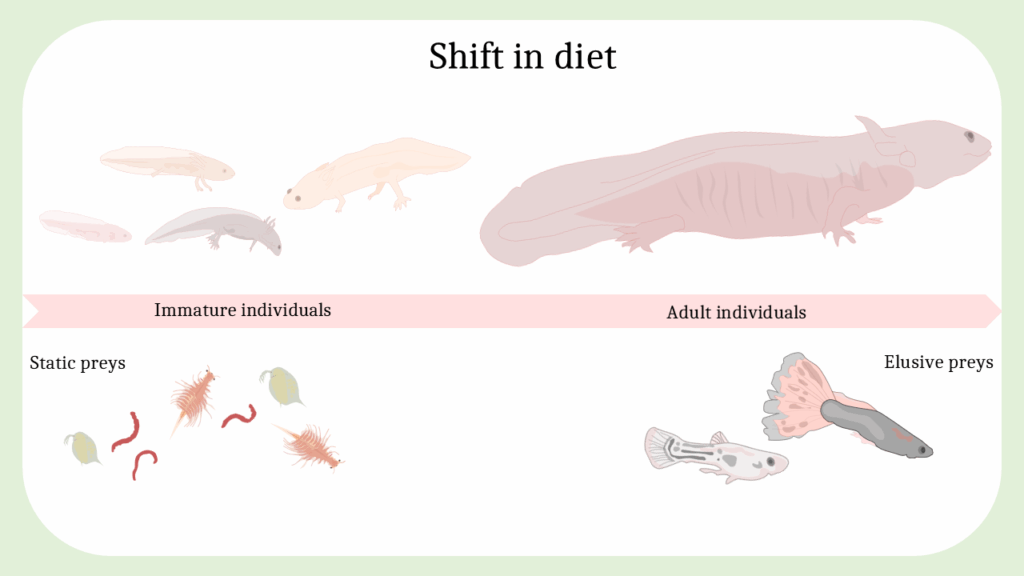
Potential implications
Ambystoma mexicanum is a highly endangered species with only a few individuals remaining in the wild. Thus, if the shift in diet across development is confirmed, understanding how axolotls feed through their ontogeny could be crucial for conservation efforts. Breeding programs could take this into account by varying the elusiveness of prey according to developmental stage, helping adult axolotls express their natural behavior before reintroduction into the wild, once their habitat is restored.
Bonus image: How we determined the developmental stage
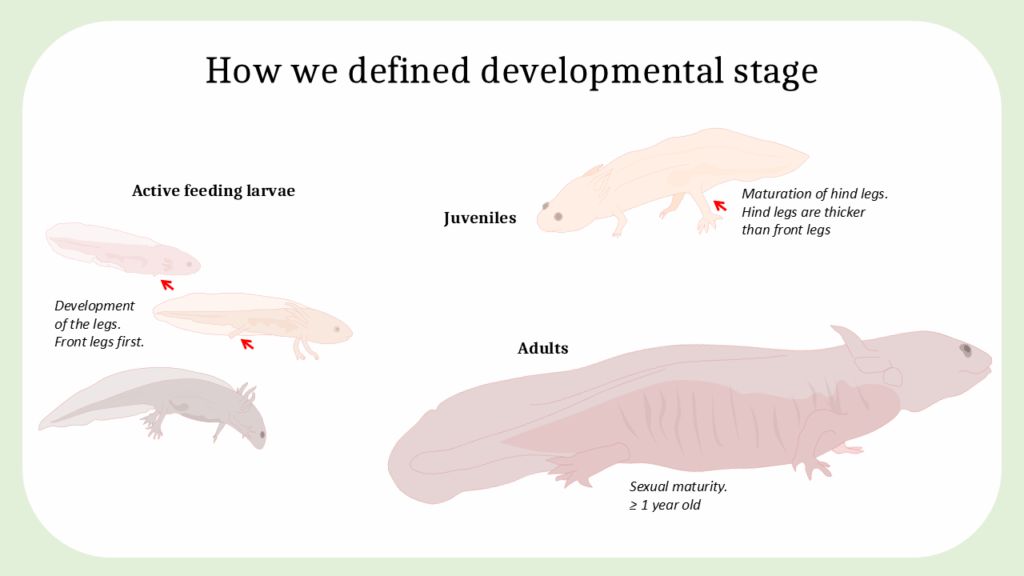
You can read the paper and the first author interview for more details
